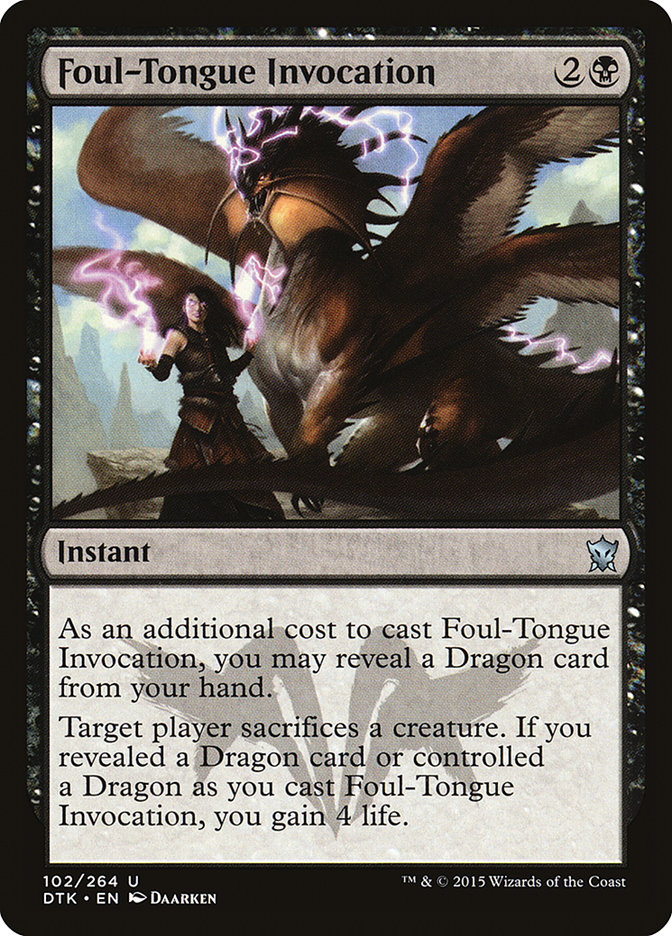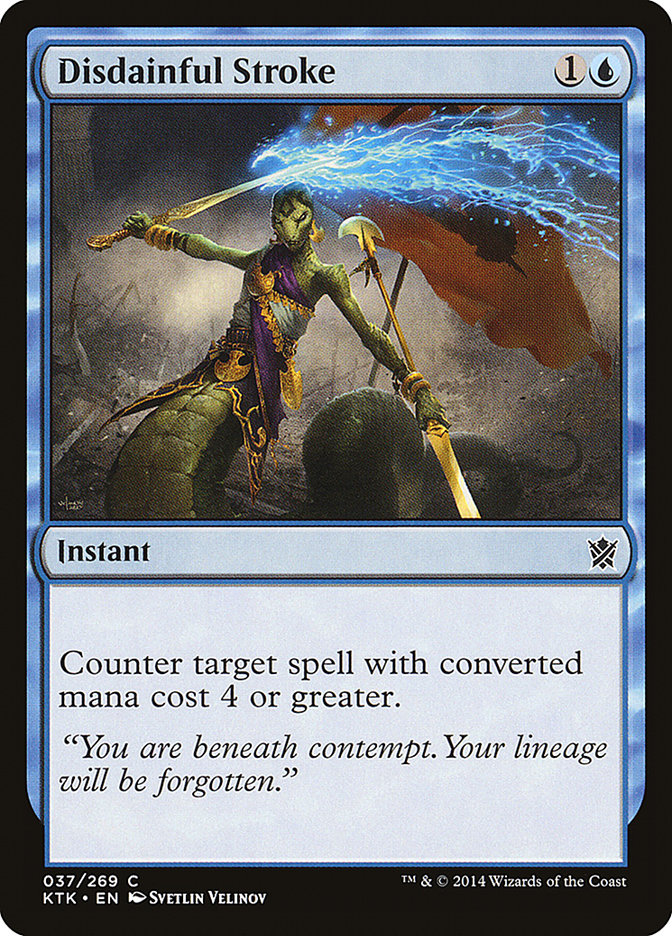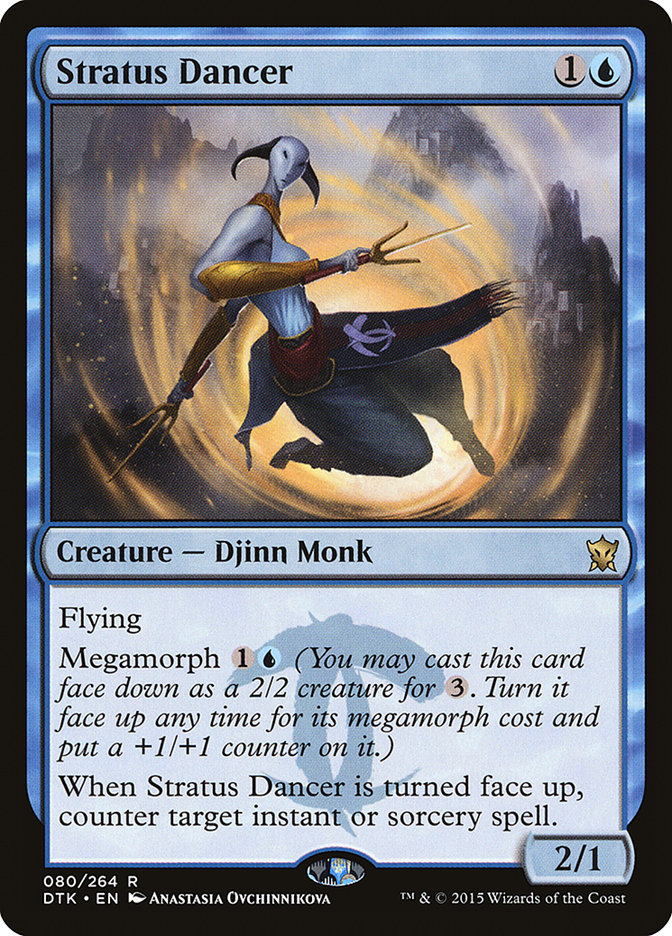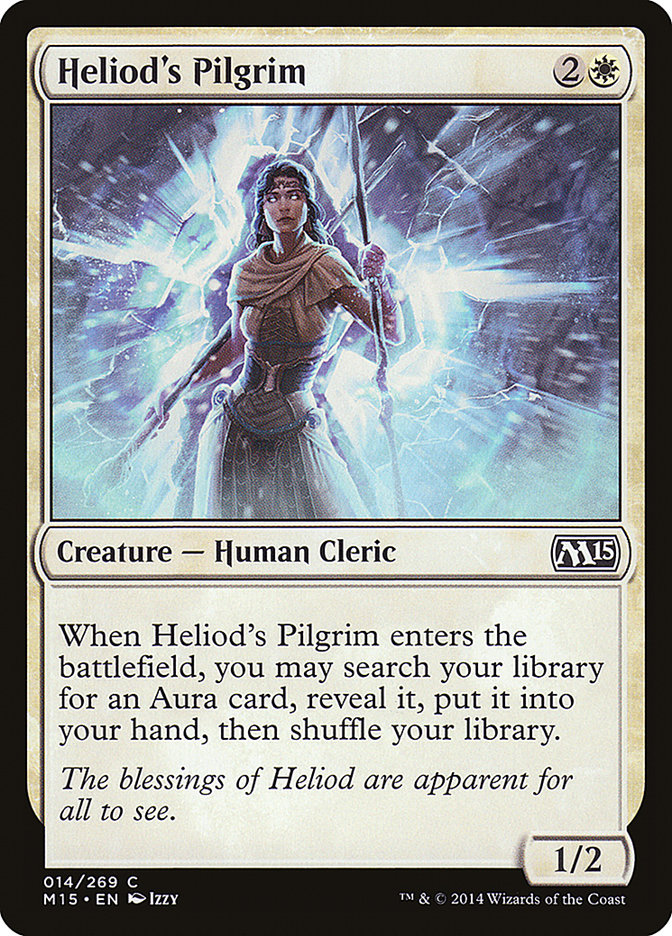What a tough couple of weeks. Two long weekends and two gigantic tournaments. With the largest-ever StarCityGames Invitational in Columbus followed by a nearly 3,000-person Grand Prix in Charlotte, I wish I could take a week off. But alas, that’s the grind, and I’m once again heading out this weekend in search of good times and glory.
Since this past weekend, you would think I’ve had enough Magic for a while, but that just isn’t true. Since returning from Charlotte, I’ve had a lot of work to do in preparation for Grand Prix Providence this weekend as well as the normal content I put up on the website. Yesterday I posted a video featuring W/U Heroic, where I go over why I like the deck in the current Standard format. If you haven’t had time to watch it yet, I’ll go over the basics.
A quick word before we begin: the terms “turtling” and “battleship” are used to describe a strategy that revolves around building a big creature/minion/resource and surrounding or protecting that thing with all of your other resources. If you fail to protect that creature/minion/resource, it will usually result in you losing the game. In Magic, we regularly see this strategy with Hexproof creatures, but it has also become pretty common with the Heroic mechanic since Theros was printed.
However, “going wide” is a newer term that describes going around a problem rather than trying to go through it. This was common against threats like Thragtusk, where interacting was a net negative. Thragtusk is one of the reasons why Hexproof was a popular strategy in Standard just a short time ago. Hordeling Outburst and Monastery Mentor are examples of ways to “go wide.”
Heroic In A Hostile Format: Adapting
With a rise in popularity of G/X Devotion, there are a lot of creatures in the format that must be dealt with. Most decks have spot removal like Hero’s Downfall or something similar to deal with such problematic creatures. Heroic usually attacks from a different angle, but that isn’t always enough. Over time I began to realize that I had too many draws that did nothing without a creature, which resulted in a higher number of mulligans. While that’s the downside of playing Heroic, I think that problem can be alleviated to an extent if we try out a few different cards.
The original iterations of W/U Heroic tried to move all-in with cards like Aqueous Form, which I actually played in the video from yesterday. Newer versions are a bit more tempo-oriented with Dromoka’s Command in order to rely less on turtling up behind one giant monster. These versions put both Treasure Cruise and Monastery Mentor to good use since you are able to be proactive and fill your graveyard quickly. Gods Willing, Ajani’s Presence, and even Feat of Resistance are best when countering a spell, making it difficult to get to the critical point needed to play Treasure Cruise.
After playing a decent number of matches, I slowly began to get a feel of what I wanted to do with the deck and how I wanted it to evolve for this format full of heavy hitters.
When Valorous Stance was first printed, people immediately put it into W/U Heroic without realizing that it wasn’t all that good if you’re trying to play battleship Magic. It wasn’t exactly cheap, and we had better options at our disposal. There weren’t a lot of creatures that needed killing, so it seemed foolish to play Valorous Stance over Ajani’s Presence or even Feat of Resistance. We wanted to kill the opponent before the expensive creatures started to matter.
Over time, we collectively forgot about Valorous Stance. It is important to constantly re-evaluate older cards as new sets are released, because they could end up being the missing link behind a great strategy. With Treasure Cruise being a major player in the current form of Heroic, having cards that are versatile is fantastic. Valorous Stance and Dromoka’s Command can be played at many more points in the game than Ajani’s Presence for significant value, making it easier to cast your Treasure Cruises. And since you have access to Treasure Cruise (and it is actually good), all the creatures in your deck are more expendable than they used to be.
Heroic, in all forms, has become one of my favorite decks since Dromoka’s Command was printed. I think that Bant Heroic is the best Dromoka’s Command deck, and the Command might be one of the best cards in Standard at the moment. With a rise in green decks, our fear of removal becomes lessened – and more of our opponents playing Courser of Kruphix is good for business.
You want more ways to interact with your opponent’s creatures, ultimately clearing the way for your creatures to attack. Valorous Stance gives you that type of functionality while also protecting your creatures from the more common spot removal. But since Valorous Stance is more expensive than Ajani’s Presence, it isn’t always reliable in that regard. But I think that’s OK when you’re playing Treasure Cruise, because you don’t really care much when your creatures die as you can replace them pretty easily.
At times, some of your Heroic creatures are actually bait. I often want to keep tapping out to get my opponent to use their Hero’s Downfall on my creatures so that I can follow up with Monastery Mentor. If they burn their removal early, they risk getting overrun by Jacob Wilson tokens. But if they don’t kill your Heroic creatures when you’re tapped out, they risk getting blown out by Gods Willing or the like when you untap.
Oftentimes, you don’t even need your protection spell to be Gods Willing so long as you have a mana open. At this point, people know how to play against Heroic (at least to a degree), and they won’t run their removal out there head-on without making sure it will resolve. This means you’ll get to untap with a creature more often and be able to protect it with Valorous Stance.
Building A Better Sideboard
The aspect of Heroic that I’ve hated the most over the last year and change has been the sideboard. Collective reasoning pointed me at cards that usually seemed underwhelming in both theory and practice. Playing more with the deck, I continuously tried to find better options but to no avail. Every time I registered Heroic in a tournament, I felt like I was playing with a 68-ish card deck, pretty sure that about half my sideboard would be (mostly) useless.
Until now.
With the current configuration of Bant Heroic, I’ve been able to slowly formulate theories and plans that end in solid execution. Finding the exact build is still going to be hard, but I’m getting closer to 73 instead of 68, and that is a huge step for any deck.
One thing I emphasize in my writing is how much better Brad Nelson uses his sideboard than anyone else in Standard. If he’s on his game, he’s going to have a plan to beat your deck. Most people lean towards specific hate cards when building their sideboard, wanting help in specific situations or matchups. Brad is more of a “broad strokes” kind of guy, leaning more towards versatility than pinpointed hate. In Standard, I think this is a good ideology because so many threats in Standard decks require completely different answers.
Some decks don’t really have that option, and you have to make do with what you have. Decks that rely heavily on synergy rather than raw power don’t have the luxury of sideboarding in ten or more cards in every matchup because that would completely change the deck’s functionality. When a Burn deck in Legacy starts bringing in Pyroblast to fight Force of Will, Brainstorm and the like, the likelihood of that deck having a smooth draw is lessened and the overall power level decreases. Redundancy is important in decks that are linear. I find that, with these strategies, most people tend to make their deck significantly worse after sideboarding, and that isn’t a place you want to be.
What I’m doing with Heroic goes against much what I’ve learned over the years, but occasionally a single spell or creature will change how everything is “supposed” to work. Treasure Cruise is that card for Heroic. We are no longer destined to lose if our battleship creature is destroyed. We have options in both maindeck and sideboard that make Treasure Cruise a better card, and we’re less vulnerable to pinpoint hate cards.
Battleship strategies are often foiled by something as simple as an edict effect.
But when we have the ability to go wide with Monastery Mentor, coupled with Treasure Cruises to fuel it, we end up with plenty of fodder for such answers. We are no longer planning on turtling up behind one creature and hoping it gets the job done… or at least we are not forced into that plan. Instead we have options, which is outside the normal capability of a battleship-style deck.
Creatures (17)
- 1 Battlewise Hoplite
- 4 Favored Hoplite
- 4 Hero of Iroas
- 2 Lagonna-Band Trailblazer
- 4 Seeker of the Way
- 2 Monastery Mentor
Lands (22)
Spells (21)

You’ll notice that not a lot has changed on the surface since Ross Merriam used this strategy to win the Standard Open in Cleveland a short while ago. But the devil is in the details, and a deck like this can fundamentally change with a better sideboard or alternative support cards. Just look at how different Bant Heroic is compared to W/U Heroic simply by adding Dromoka’s Command. While they look and act similarly, they are not the same animal. A gorilla is not a chimpanzee is not an oragutan.
But yeah, they all like bananas.
Since you probably know pretty much all there is to know about the maindeck, let’s look at the sideboard and figure out exactly what’s going on.
Some people like Stubborn Denial. Others like Negate. I like keeping their Dragonlord Ojutais off the table. Disdainful Stroke is the only playable counterspell that deals with Ojutai, Ugin, and Dig Through Time. Those are their most powerful spells against you, as the rest of their deck is full of redundant counterspells and removal. Yeah, you might be able to out-tempo the Esper Dragon decks with Stubborn Denial, but I’ve had it rotting in my hand too many times. Older versions of Heroic, which played the full four copies of Battlewise Hoplite, were able to get a 4/4 creature rather easily. I find that in many post-sideboard games, this is actually pretty difficult. With so much removal, and even removal that gets around all of your protection effects, you need something to help win the long game.
While Disdainful Stroke is primarily there for Esper Dragons, it doesn’t really discriminate against other decks with expensive spells. With so many Siege Rhinos, Elspeths, and other expensive stuff running around, Disdainful Stroke will have a target in most matchups. But it is also here to help facilitate your alternate game plan.
In some scenarios, we’re siding in around ten cards. These cards are all built around making Treasure Cruise into a more powerful engine. We saw a lot of this when Sphinx’s Revelation was in Standard, where many control decks would side in cheap interactive cards to make tapping out for Sphinx’s Revelation less of a tempo sink. Instead, we have a bit of the reverse, where we want cheap cards first so that our Treasure Cruises cost less mana.
Disdainful Stroke is important in this plan because we want to be able to win the long game. Stroke gives us the right tool for the job, locking down all of the big stuff people are going to throw at you. Cards like Ugin are nearly impossible to beat, so keeping it off the table is a high priority, but we also want a card that can interact with opposing Siege Rhinos and the like.
This one started off as an experimental sideboard option, but it grew on me pretty quickly. I began to find myself in many scenarios after sideboarding that involved me effectively locking my opponent out of the game with Disdainful Stroke in hand and a morphed Stratus Dancer in play. It isn’t too hard to get to that spot after boarding when you have so many answers on top of all the card draw spells.
Stratus Dancer also acts as a reactive element that can be played aggressively. Against control decks, landing a Stratus Dancer while they’re tapped out can effectively end the game on the spot since it adds a virtual three power to the board while also stopping their next way of interacting with you.
Stratus Dancer really is the best of both worlds for a deck like this. When you’re planning on playing the Treasure Cruise games after sideboard, Stratus Dancer is a powerful way to let you use excess mana. Flooding out can be a real issue since your deck is full of so many cheap cards that cycle, or only have a little effect on the game without some help. Having powerful spells that allow you to use all of your mana each turn, like Stratus Dancer, is exactly where you want to be when you board into this plan.
You can also feel safe with a Stratus Dancer in play since they won’t be able to combo-kill your board with Thoughtseize/Silumgar’s Scorn paired with Crux of Fate or the like. Before they try to kill one of your more important creatures, like a Monastery Mentor or gigantic Heroic creature, they’re going to need two spells to get the job done.
While this isn’t a flashy sideboard card, it serves a very important role. Against aggressive decks, it gives you more virtual copies of Ordeal of Heliod while also providing a body that can block goblin tokens. Against Stormbreath Dragon decks, you have more virtual copies of Encase in Ice. And lastly, it gives you a throwaway body for stuff like Foul-Tongue Invocation while providing some minor value. I have also won games on the back of a gigantic Heliod’s Pilgrim when I start suiting it up with Ordeal of Thassa. Those games aren’t pretty, but attrition battles are won by having the last impactful threat. In a pinch, any creature will do.
Working For The Weekend
I’m not in love with Standard, but Bant Heroic is fun enough, and powerful enough, to keep me interested. Everything else just feels like jamming Dragons into each other until one person finds their end-all be-all trump card. I get that playing against Heroic can push you away from wanting to play the archetype. It functions on a different level than most other Standard decks, and that makes people uncomfortable.
I was in the same boat a year ago.
But when I actually started playing with it, and working on it, I learned that there is so much more to Heroic than just building a battleship creature and hoping that it is enough to win the game. You have to consider every sideboard option that your opponent has access to, and you have to know how to play around everything. There will be games where you mulligan into oblivion and just lose, but those games do not happen as often as some people would have you believe.
I’m a fan of decks that have high risk and reward factors. Heroic, like Infect in Modern or Legacy, rewards good deckbuilding, proper positioning, and learning when it is correct to play safe or overcommit to the board. There are some cards, like Ugin, that will leave you helpless, but don’t think for a minute that every other deck in the format is immune to it. Big, swingy spells like Ugin will end most games that they are cast, regardless of whether it is immediately or over the course of a long game. I’m much more of a fan of knowing when I’m beat so I can save some time.
Heroic isn’t for everyone, and that’s OK. But if you’re like me and just sick of all these green decks, then Heroic is likely your best bet to attack them from an angle they’ve likely forgotten about. If you plan on playing it, make sure you do your homework, and figure out what cards work and don’t work for you. If you don’t like sideboarding ten or more cards a match, then you could work out a sideboard plan featuring a host of other cards that keeps your Plan A intact.
I’m heading to Providence for the Grand Prix this weekend in search of some Pro Points. I only need a few to hit Silver status, which will qualify me for both Pro Tour Origins and Pro Tour Battle for Zendikar. I’m not expecting any miracles, but I do think that Heroic is in a great position for the current metagame, and I’m looking to exploit the decks that have forgotten about it.





